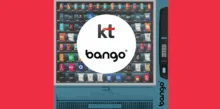Bar codes and other camera stuff
by Sukey Miller

There is some interesting discussion about bar code scanning from mobile phones over at http://tech.groups.yahoo.com/group/momolondon
Bango worked with Interactive Wireless on phone to web stuff in 2002,
and again with another company (that sold out to OD2) in 2004. We
also did a big trial with Vodafone in 2005.
http://www.3g.co.uk/PR/July2000/3721.htm
https://bango.com/assets/data/pressreleases/57_bangospot.pdf
http://theponderingprimate.blogspot.com/2005/07/mobile-marketing-its-
biggest.html
We discovered the “two gotchas” about this technology:
(1) Walled garden think. For many years, mobile operators have been
beating phone makers and preventing progress in Java standards to
prevent the microphone and the camera on phones being accessible to
downloaded software. This was because they were petrified by people
writing software that curcumvented the MMS sending and voice features
of phones – which they believed would generate a lot of money.
Allowing MMS “bypass” and VOIP clients would be a bad thing. Even
though by 2004-5 the walls were coming down, the change of course in
phone design means a 3-4 year delay in open platforms coming
through. SO, expect progress on downloadable software that can use
phone features like camera with widespread use in 2009-10
(2) Patent fear. Neomedia is a small company that has a patent on
linking barcodes to internet content.
( http://www.eff.org/patent/wanted/patent.php?p=neomedia ) Mobile
phone companies like Vodafone, T-Mobile and Orange were paralysed
from acting by fear of a patent infringement case. As a result,
the “safe route” of letting QR codes “covertly” appear in phones (as
a “japanese feature”) seems to have been the strategy adopted. As a
result, hardly anybody knows that their phoen can read QR codes – so
they are not used outside Japan. This is a further “business
depressor” for innovative barcode companies with more robust codes
than QR.
Subscribe to our newsletter
Get the latest subscription bundling news and insights delivered straight to your inbox.



